Fighter aircraft of Poland in the 1970s–1990s
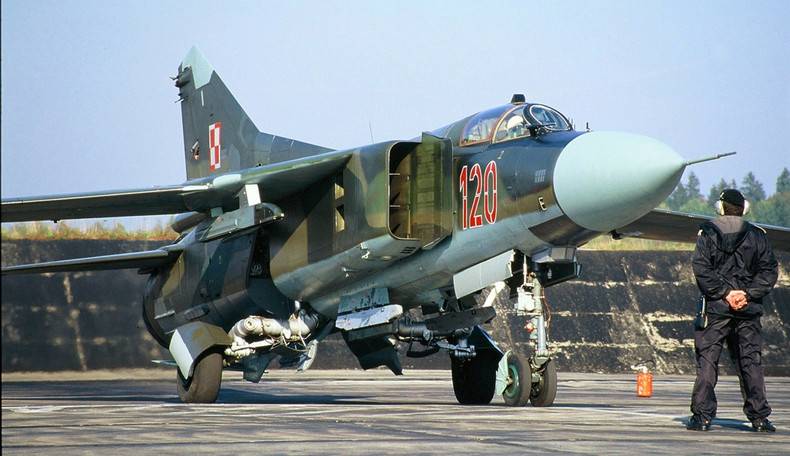
The armed forces of Poland were among the strongest among the allied countries of the USSR in Eastern Europe. The Polish People's Army has traditionally been the recipient of the most modern Soviet military equipment and weapons.
The level of training of the personnel of the Polish armed forces was at a high level, the logistics and the proportion of serviceable combat-ready equipment in the troops were even better than in the Soviet army.
Polish Air Force MiG-21 fighters
In response to the improvement of combat aviation NATO countries in the 1960s, supersonic MiG-21 fighters with a delta wing appeared in the air forces of the Warsaw Pact states. Poland became one of the first Eastern Bloc countries to adopt the MiG-21F-13 front-line fighter. Deliveries of this type of fighters began in January 1963. A total of 25 MiG-21F-13s were delivered to Poland.
The MiG-21F-13 fighter with a maximum take-off weight of 8 kg and the R-625F-11 engine became the first wide modification in the large twenty-first family. Its onboard instrumentation was very simple. The aircraft did not have its own radar, the sighting equipment consisted of an ASP-300N-VU5 optical sight, coupled with a VRD-1 computer, and a SRD-1 Kvant radio range finder located in a radio-transparent fairing of the central body of the engine air intake.
The search for air targets was carried out by the pilot visually or by commands from the ground control station. Built-in armament included a 30 mm HP-30 cannon. Two K-13 homing air combat missiles could be suspended under the wing. For air targets, it was also possible to use the 57-mm NAR S-5 from two 16-round launchers. The maximum flight speed at altitude is 2 km/h. Flight range - 125 km, with additional tanks - 1 km.
Despite the very simple avionics and limited capabilities in terms of combating an air enemy, at night the Polish military highly appreciated the MiG-21F-13 and wanted to get a license for its production. However, this Poland was denied.
In 1965, 19 serviceable MiG-21F-13s were brought into the 4th Fighter Aviation Regiment, based 35 km northeast of Szczecin. In October 1973, the last 12 Polish fighters of this type remaining in service were handed over to Syria.
The MiG-21F-13 in the Polish combatant squadrons was replaced by the MiG-21PF front-line interceptors, with an improved engine, the RP-21 Sapphire radar sight and the Lazur command guidance equipment, which allowed the MiG-21PF to operate in difficult weather conditions and at night . Unlike the MiG-21F-13, this aircraft did not have built-in cannon armament, and only guided missiles or 57-mm NAR S-5 could be used against air targets.
From April 1964 to August 1965, Poland received 84 aircraft, which were operated in nine air regiments for a long time period. The last machines of this type were decommissioned in 1989.
In 1965, six MiG-21U combat trainers arrived in Poland, and they were distributed among four air regiments. The service of these aircraft turned out to be long, the last two MiG-21Us were decommissioned in February 1990 and transferred to museums in Krakow and Jonow.
In 1972, in addition to the existing MiG-21U, 20 MiG-21UM combat trainers were purchased, which served until 2003.
In February 1966, deliveries of the MiG-21PFM began - the most numerous representative of the "twenty-first" family in Poland. In total, the Polish Air Force received more than 100 of these fighters. Their service continued until 1993.
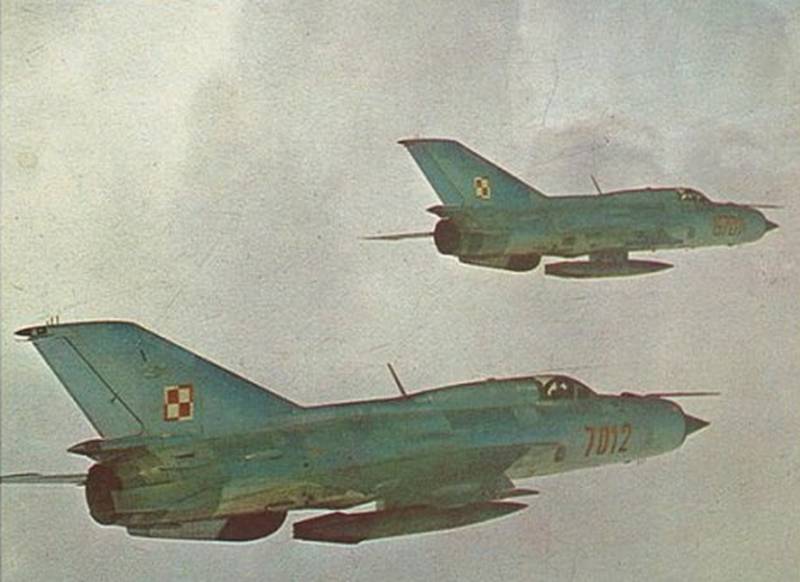
The MiG-21PFM had a maximum takeoff weight of 9 kg and was equipped with a R-120F11S-2 turbojet engine with a thrust of 300 kgf. Maximum speed - 6 km / h. Practical range - 175 km, with PTB - 2 km. Ceiling - 175 m.
The front-line interceptor MiG-21PFM was equipped with a modified RP-21M radar sight and had the ability to suspend a GP-9 container with a double-barreled 23-mm gun GSh-23L. The armament of the MiG-21PFM, in addition to the "thermal" UR R-3S (K-13), included K-5MS guided missiles with a radar guidance system.
The R-3S (K-13) air combat guided missile with a thermal homing head was created in 1960 on the basis of the American AIM-9B Sidewinder missile.
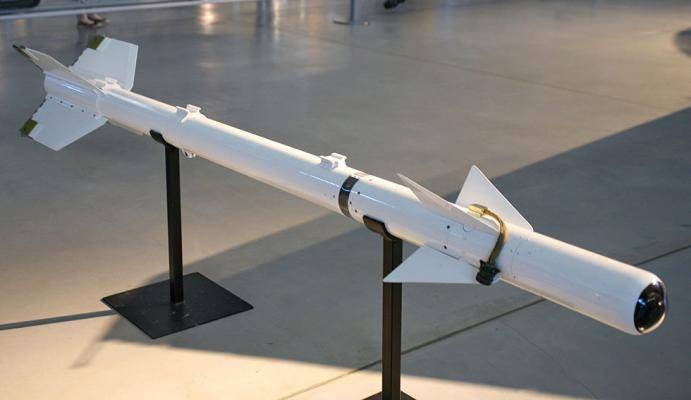
In combat position, the rocket weighed 76 kg. Length - 2 838 mm. Case diameter - 127 mm. Wingspan - 528 mm. Launch range - up to 7,5 km.
The MiG-21PF/PFM were the main Polish air defense interceptors for a long period of time and actively participated in joint exercises with combat aviation of the ATS countries. In 1971, a Czechoslovak Su-7BKL fighter-bomber was accidentally shot down by a Polish MiG-21PFM during a joint exercise.
In 1967, along with the purchase of more MiG-21PFM, Poland received 12 MiG-21PFM (94N) in the version of the carrier of a tactical nuclear bomb with a capacity of 10 kt (in the Polish Air Force this aircraft had the designation MiG-21N). However, Polish sources claim that "atomic" fighters could also perform all the tasks inherent in conventional front-line interceptors.
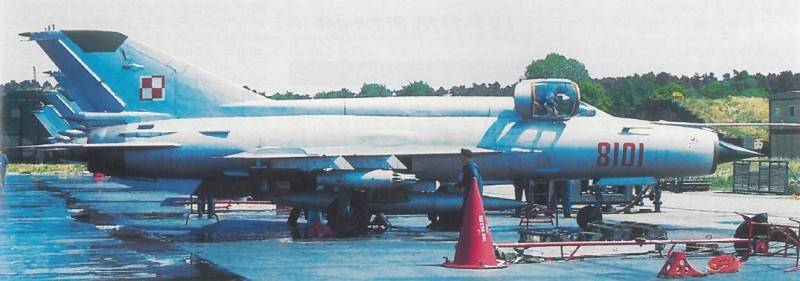
MiG-21N aircraft were armed with squadrons of the 11th Fighter Wing in Debzhno and the 2nd Fighter Wing in Goleniow. Training in the use of nuclear weapons carried out in the USSR. To test the use of special weapons, mock-ups of nuclear bombs with a smoke bomb inside were used.
During the Cold War, there were storage facilities for nuclear weapons on the territory of Poland, the maintenance and protection of which was carried out by Soviet military personnel. During a special period, "special ammunition" could be transferred to the Polish Air Force, but until a direct order for use was received, activation codes were stored separately.
In 1969, Soviet pilots flew a batch of 30 front-line MiG-21M fighters to Polish airfields, designed to replace the subsonic Lim-5. This fighter retained the R-11F2S-300 engine, but was equipped with a modified RP-21MA radar sight and a significantly expanded armament. In total, Poland imported 120 MiG-21MF, which were in service until the end of the 1990s.
In 1972, the MiG-21MF appeared in the Polish Air Force with the RP-22 radar. The new station had higher performance, the target detection range reached 30 km, and the tracking range increased from 10 to 15 km.
A more modern modification of the "twenty-first" carried R-3R (K-13R) missiles with a semi-active radar homing head and an increased launch range, which seriously increased the ability to intercept at night and in poor visibility conditions. Radar UR R-3R entered service in 1966. Launch range: from 0,3 to 15 km.
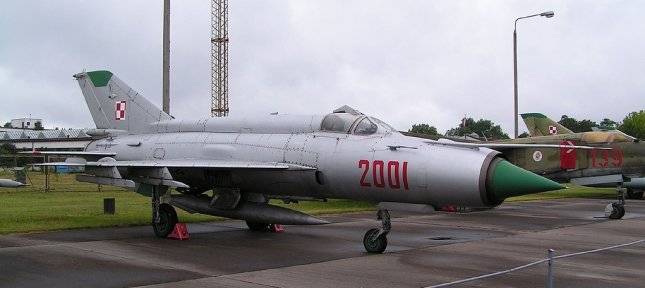
Since 1979, the Polish Air Force has operated MiG-23MF variable-wing fighters, but this aircraft turned out to be much more complicated and more expensive to operate than the well-mastered "twenty-first". And instead of an additional batch of MiG-23MF, the command of the Polish Air Force in the summer of 1979 preferred to order aircraft of the most advanced modification in the "twenty-first" family - the MiG-21bis.
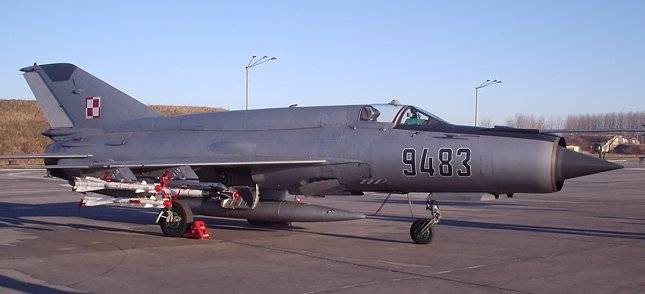
The MiG-21bis was created on the basis of an analysis of the experience of maneuverable air combat in local conflicts. The fighter, equipped with a new R-25-300 engine with an extraordinary afterburner thrust of 7 kgf, received very good acceleration capabilities and a high rate of climb. Thus, the MiG-100F-21 modification fighter had a rate of climb of 13–140 m/s, and the MiG-150bis up to 21 m/s.
The MiG-21bis had avionics and armament perfect by the standards of those years, which made it a very formidable opponent in close air combat. The new RP-22M radar and Lazur-M communications equipment were mounted on the aircraft, which provides interaction with the ground command guidance system for air targets, as well as a flight and navigation complex for short-range navigation and landing approach with automatic and director control. In addition to missiles of the K-13 family, the maneuverable R-60 melee missiles with a thermal homing head were introduced into the armament. At the same time, up to six missiles could be placed on the hardpoints. The aircraft had a built-in 23 mm GSh-23L cannon. To reduce the takeoff, solid-fuel boosters with a thrust of 1–300 kgf could be installed.
The MiG-21bis had a maximum takeoff weight of 10 kg. Flight range - 400 km, flight range with three external tanks - 1 km. Maximum speed - 265 km / h. Practical ceiling - 1 m.
The first 10 MiG-21bis arrived in Poland in February 1980. These machines, included in a batch of 36 aircraft, entered service with the 34th Fighter Aviation Regiment, based in Gdynia. In June 1980, Polish MiG-21bis took part in the Granit-80 exercises, during which fighters of this type carried out live firing for the first time at sea and land ranges. In August 1980, a group of 14 pilots and guidance officers of the regiment went to the Ashluk training ground, where, during the Argon-80 exercises, guided missiles were launched at La-17 radio-controlled air targets.
In total, Poland acquired 72 MiG-21bis fighters, which entered service with two air regiments. Polish sources claim that all these aircraft could be carriers of tactical nuclear bombs. In 1989, shortly before the liquidation of the Warsaw Pact, Soviet specialists turned off the electrical circuits and sights necessary for the use of nuclear weapons.
In 1987, the restoration repair of the MiG-21bis of the Polish Air Force began at the aircraft repair plant in Demblin. As of 1991, there were 64 aircraft in combat readiness.
Overhauled Polish MiG-1990bis flew actively in the 21s. Due to lack of funding, six fighters were sold to Uganda. The proceeds from this deal were used to maintain the remaining aircraft in service. But, despite this, the accident rate of the MiG-21bis was high. So, from 1993 to 2000, 9 aircraft crashed and 3 pilots died in flight accidents.
As of 2001, only half of the fifty MiG-21bis available could take to the air, and in December 2003, the flight career of this type of fighters in Poland ended.
After the reorientation of the Polish clones of the MiG-17F / PF to strike missions for close air support of the ground forces, the supersonic MiG-21 in the 1970-1980s were the main Polish front-line fighters designed to gain air superiority, cover parts and important objects from means air attack.
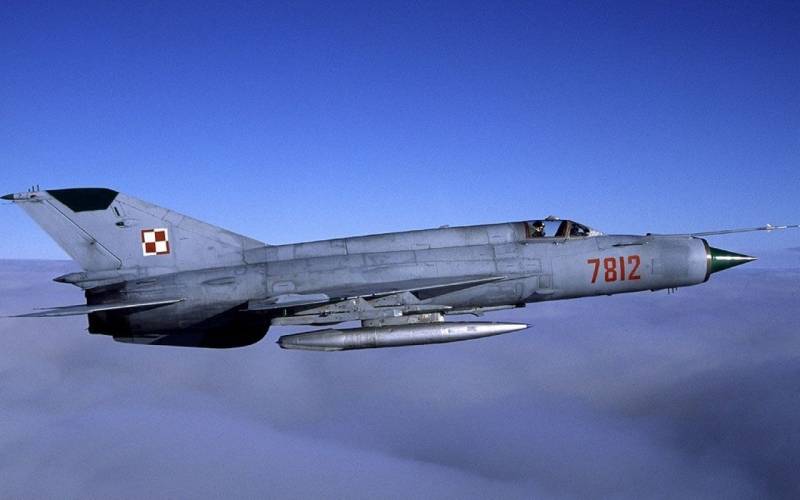
In total, 1965 MiG-1980 aircraft of all modifications were delivered to Poland from 582 to 21. Over 38 years of active operation, some of the machines were lost in disasters and accidents, and some were sold abroad. In addition to third world countries, Polish MiG-21s were purchased by American private aviation companies that provide services to the US Department of Defense in organizing combat training of air defense units and conducting training air battles with potential enemy aircraft.
Polish Air Force MiG-23 fighters
The latest modifications of the MiG-21, which were available in the Polish Air Force, were very good light fighters for their time with a good balance in terms of cost-effectiveness.
However, with all the undeniable advantages of the "twenty-first", this fighter had a relatively short range, limited payload, very modest airborne radar characteristics and could not carry medium-range air-to-air missiles.
In the mid-1970s, the leadership of the Polish Air Force began to look for a replacement for the MiG-21PFM fighter, the main interceptor of the air defense forces. The new supersonic fighter had to meet several basic criteria, such as high altitude and high flight speed, as well as the ability to deal with air targets in all weather conditions and at night.
To do this, the new interceptor had to have perfect avionics equipment, a radar with high energy characteristics, medium-range missiles capable of hitting visually unobservable targets, a powerful engine that provides good acceleration performance and high supersonic flight speed, as well as a large supply of fuel on board, necessary to provide the required range.
The only Soviet fighter that at least partially met the specified criteria at that time was the MiG-23M. For the first time, Polish representatives were able to get acquainted with it in June 1978.
In January 1979, a group of pilots and technicians of the Polish Air Force were poisoned in the USSR to learn how to pilot and maintain the MiG-23MF and MiG-23UB aircraft.
On June 4, 1979, 9 MiG-23MF fighters and 2 MiG-23UB combat trainers arrived in Poland. In total, until the end of September 1982, the Polish Air Force received 36 MiG-23MF and 6 MiG-23UB. Only one unit was equipped with these aircraft - the 28th Fighter Aviation Regiment, which was first based at the Minsk-Mazovetsky airfield, and then it was transferred to Slupsk.
The variable geometry wing fighter MiG-23MF was significantly larger and heavier than the MiG-21. The aircraft with a maximum takeoff weight of 17 kg had a flight range of 790 km. The maximum flight speed at an altitude of 2 m is 700 km / h. Practical ceiling - 12 m.
The MiG-23MF was equipped with the Sapfir-23E radar with a detection range of 45 km, the TP-23 heat direction finder and the Lazur-SM command guidance system. The armament consisted of two R-23R or R-23T medium-range missiles, two to four K-13M short-range missiles or R-60 melee missiles, and a hanging container with a 23-mm GSh-23L cannon.
The MiG-23MF airborne radar, compared to the RP-22M station installed on the MiG-21bis, could detect targets at a 1,5 greater range. The R-23R missile with a semi-active radar seeker was capable of hitting targets at a distance of up to 35 km and was 13 times superior to the K-4R missile in this indicator. The launch range of the UR R-23T with TGS reached 23 km. It was believed that this missile could hit targets on a collision course, and heating of the front aerodynamic surfaces was sufficient to capture the target.
After the flight and technical staff mastered the MiG-23MF fighters, they participated in most of the exercises organized in Poland and abroad. Maneuvers of this type confirmed both the high quality of the combat aircraft and the good training of the pilots.
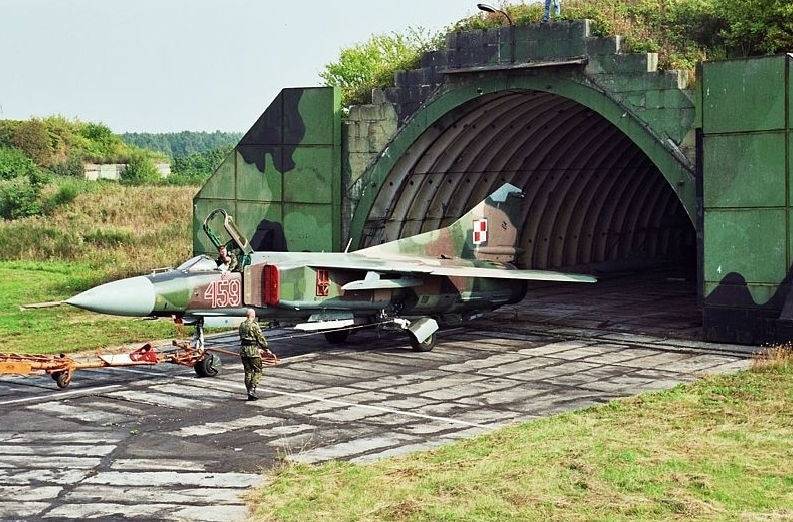
MiG-23MF, performing tasks to ensure the country's air defense, flew in extreme weather conditions and at night, at high and low altitudes. They repeatedly rose to intercept aircraft that violated the state border of Poland.
In 1981, the "twenty-thirds" of the 28th Fighter Aviation Regiment took part in the large Soyuz-81 maneuvers of the Warsaw Pact countries. Polish MiG-23MF regularly practiced strikes against surface targets and based on runways arranged on the highway. Air targets were fired at the Ustka sea range. In 1980, 1982, 1984 and 1985 they intercepted La-17 targets at the Ashluk range with medium-range missiles.
The MiG-23MF acquired by Poland could carry nuclear bombs. In 1989, after the decision of the Soviet government to reduce nuclear forces, the equipment necessary for the use of special weapons was dismantled.
In the late 1980s, the overhaul of the Polish MiG-23MF/UB began. The first aircraft was repaired in the GDR at the Dresden factory in November 1988. Many fighters were overhauled at the Bulgarian plant in Plovdiv and at the Soviet plant in Chuguev. However, after the collapse of the ATS, repairs abroad became impossible, and since 1993, Polish variable-wing fighters have been repaired at an aircraft repair plant in Demblin.
In 1985, the USSR offered Poland a more advanced modification of the "twenty-third" - the MiG-23ML. This fighter had a power plant with increased thrust, improved acceleration and maneuverability, as well as electronics based on a new element base. The detection range of the Sapfir-23ML radar was 85 km, the capture range was 55 km. The TP-23M heat direction finder detected the exhaust of a turbojet engine at a distance of up to 35 km. All sighting information was displayed on the windshield. The MiG-23ML ammunition included R-24 air combat missiles with a launch range of up to 50 km in the forward hemisphere and upgraded R-60MK with a noise-resistant cooled TGS.
However, taking into account the fact that all modifications of the MiG-23 compared to the MiG-21 were significantly more expensive to maintain, the variable-sweep wing fighter made increased demands on the qualifications of the flight crew and was strict in piloting, the leadership of the Polish Air Force in the conditions of the economic crisis and internal political instability from the acquisition of the MiG-23ML refused.
By the early 1990s, NATO military experts had studied the MiG-21 family of fighters well, but they were not familiar with the MiG-23. In March 1993, the first demonstration of the capabilities of the MiG-23MF took place for a delegation of NATO experts who could observe an imitation of air combat with the MiG-29 over Powidz and get acquainted in detail with the avionics of the aircraft. In September 1994, in Slupsk, as part of the Partnership for Peace program, joint flights of Polish MiG-23MFs with American F-15Cs of the 493rd Fighter Squadron of the US Air Force were carried out. MiG-23MF/UB aircraft also operated from western airfields, taking part in the Orla Szpon-9 and Ocelot-99 exercises.
The high intensity of flights sometimes led to equipment failures, and piloting errors also occurred. Four MiG-23MF aircraft crashed, two pilots were killed.
Due to the lack of spare parts and high operating costs, starting from 1994, the Polish "twenty-thirds" began to fly less, and aircraft that required expensive repairs were decommissioned. In 1996-1998, despite the large residual resource, 21 MiG-23MF / UB were decommissioned. The 8 MiG-23MF and 2 MiG-23UB remaining in service were decommissioned in September 1999 for financial reasons. These aircraft could serve for at least 8 more years, but economic factors took over. In conditions when no one threatened Poland, the political leadership decided to abandon combat aircraft, which require significant operating costs.
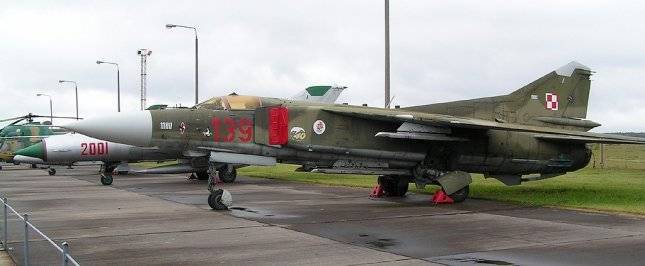
The decommissioned fighters were transported to the training ground in Nadarzyny, where they served as targets for fighter-bomber aircraft. Several aircraft suitable for restoration were bought by American companies. Approximately 10 copies remained in Poland as monuments and museum exhibits.
Polish Air Force MiG-29 fighters
In the first half of the 1980s, American-made F-16A / B aircraft began to enter the air forces of European NATO countries, and the deployment of 4th generation fighters from the US Air Force began at air bases in Italy and Germany.
The experience of combat operations of Syrian aviation in Lebanon has shown that it is very difficult for Soviet-made MiG-21 and MiG-23 fighters to resist the American F-15 and F-16.
In this regard, in the second half of the 1980s, it was decided to supply MiG-29 fighters to the ATS countries, which, in terms of combat characteristics, were at least as good as the latest American combat aircraft.
In the summer of 1989, 7 MiG-29 aircraft arrived in Poland (4 single-seat MiG-29A fighters in version 9.12A and 3 combat trainers MiG-29UB in version 9.51), another 5 single-seat fighters were delivered in October 1990. All single and double MiG-29s became part of one squadron of the 1st Fighter Aviation Regiment in Minsk-Mazovetsky, the other two squadrons continued to use the MiG-21MF.
A combat aircraft with a maximum takeoff weight of 18 kg could stay in the air for more than two hours and reach a speed of 480 km/h at high altitude. This was quite enough to control the airspace of a country like Poland.
The MiG-29A fighters of the export modification supplied to the allies under the Warsaw Pact significantly exceeded in their combat and operational characteristics all Soviet-made front-line fighters transferred earlier.
In close air combat, the MiG-29 in the 1980s-1990s, due to its high maneuverability and thrust-to-weight ratio, had an advantage over all NATO fighters. In addition, the Fulcrum was equipped with fairly advanced avionics for its time and carried six R-60MK and R-73 melee missiles with a launch range of 10–30 km.
Built-in armament - 30-mm gun GSh-301. To combat an air enemy out of line of sight, the combat load could include two R-27R medium-range missiles with a semi-active radar seeker, capable of hitting air targets at a distance of up to 60 km, which in turn made it possible to perform tasks of intercepting front-line and strategic bombers at distant approaches from protected objects. The H019 radar mounted on the MiG-29A export fighter is capable of detecting a fighter-type target at a distance of up to 85 km. Optical-location system in conditions of good visibility captures targets in the infrared range at a distance of up to 35 km. Target information is displayed on the windshield.
The twin-engine MiG-29A favorably differed from the MiG-23MF, which was largely focused on attacks with medium-range missiles, ease of piloting, maneuverability and lower labor costs in preparation for a sortie.
It was planned that this 4th generation front-line fighter by the end of the 1990s would replace the MiG-21 and MiG-23 fighters in the Air Force of the Warsaw Pact countries. However, due to the collapse of the communist ideology and the collapse of the USSR, these plans could not be realized, and the supply of the MiG-29 to the countries of Eastern Europe ceased.
After a divorce from Slovakia, the Czech Republic decided to get rid of its MiG-29 fighters and began to look for a buyer for them. In 1995, a deal was made to exchange 9 single-seat fighters and one "spark" for 11 W-3 "Sokół" helicopters (created by PZL based on the Mi-2).
In the early 2000s, the design bureau of the aircraft factory in Mielec proposed, together with Russia, to develop the M-29 fighter based on the MiG-2000 and produce it in Poland. But the matter did not progress beyond discussion.
On January 1, 2001, the structure of aviation units in Poland changed - the 1st Fighter Aviation Regiment was transformed into the 1st Tactical Aviation Squadron. MiG-29 fighters became the main aircraft ensuring the inviolability of air borders, and the 1st squadron often operated from other airports in the country in separate units, which alternately carried out combat duty for 2–3 months.
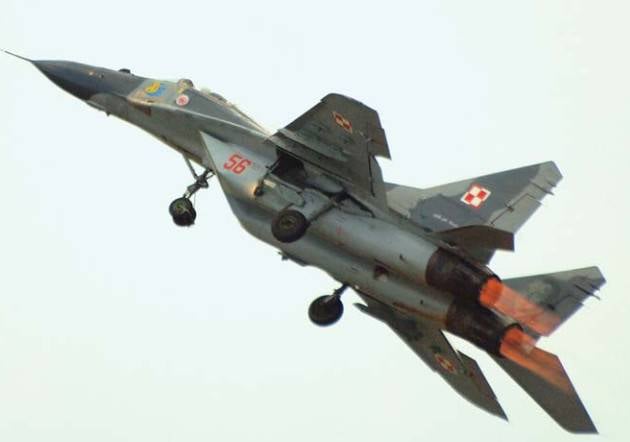
In 2003, Poland received 22 MiG-29s from Germany. Including 18 single MiG-29G and 4 double MiG-29GT. Before transferring them to the Air Force, the fighters underwent refurbishment at a factory in the city of Bydgoszcz. In June 2005, 4 MiG-29 aircraft (3 single and 1 double) entered service with the 41st Tactical Aviation Squadron in Malbork.
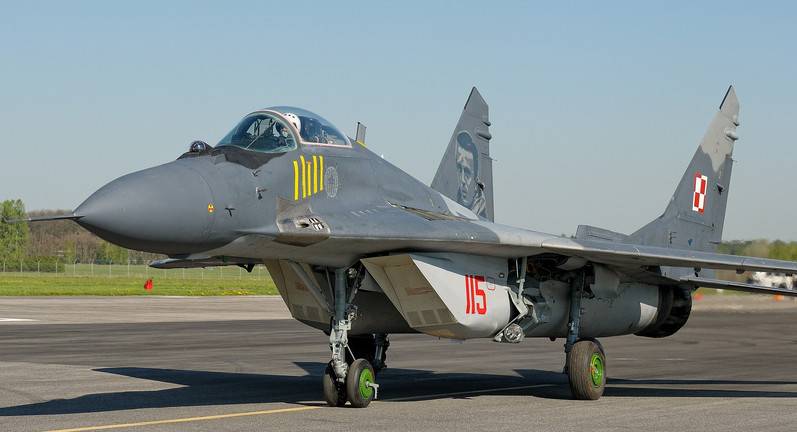
In 2006, two MiG-29 aircraft were sent to the flight school located in Demblin. Due to a shortage of spare parts, seven former German MiG-29s were dismantled for spare parts. One combat training fighter became an exhibit of the Polish Aviation Museum in Krakow.
In the 29st century, Polish MiG-1s regularly took part in joint activities with the aviation of NATO countries. In the period from January 31 to March 2006, 1, fighters from the 4st tactical aviation squadron, based at the airport in Zokniai near Siauliai, controlled the airspace of the three Baltic states: Lithuania, Latvia and Estonia. The Polish group included 29 MiG-6 aircraft and XNUMX pilots.
In 2009, the aviation plant in Bydgoszcz proposed a radical modernization of the existing MiG-29s with a simultaneous overhaul. At the same time, Polish fighters were supposed to receive modern Western avionics and weapons. But for financial reasons, this was abandoned.
To be continued ...
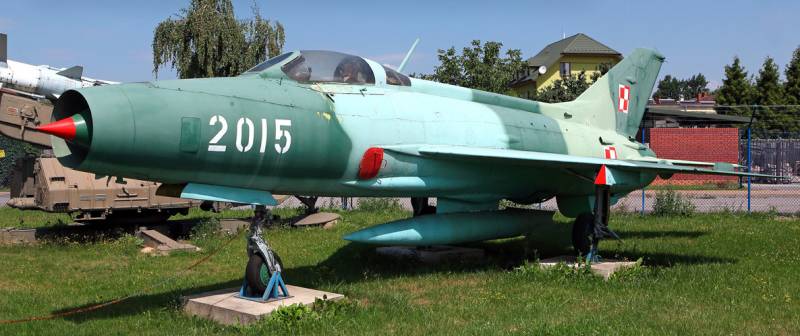
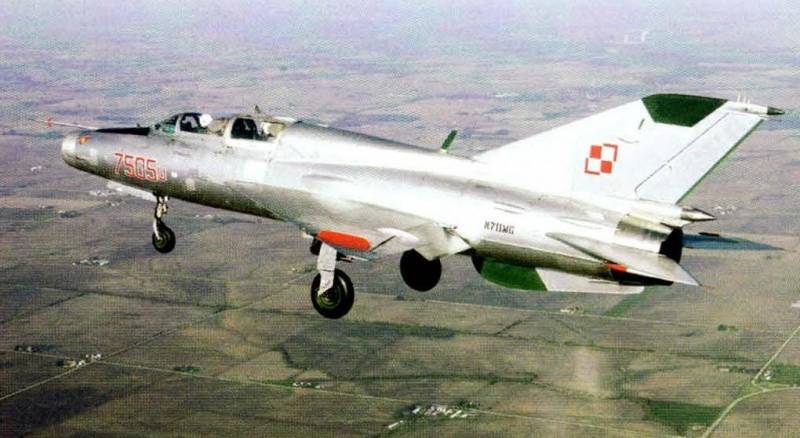
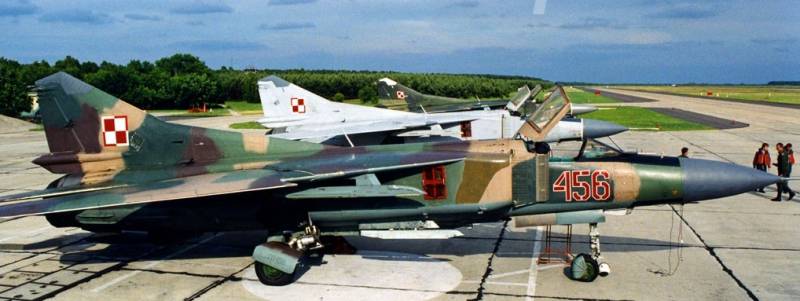
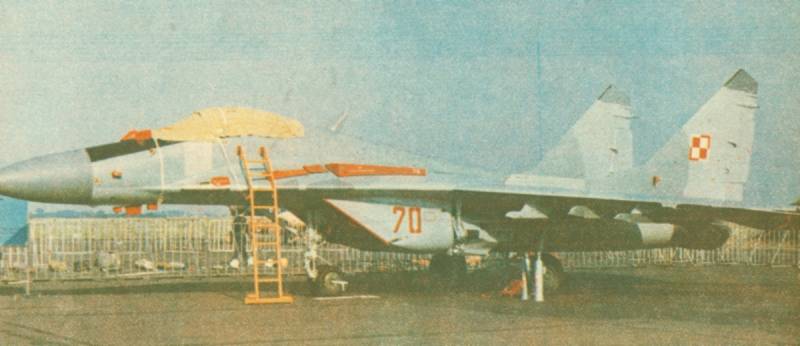
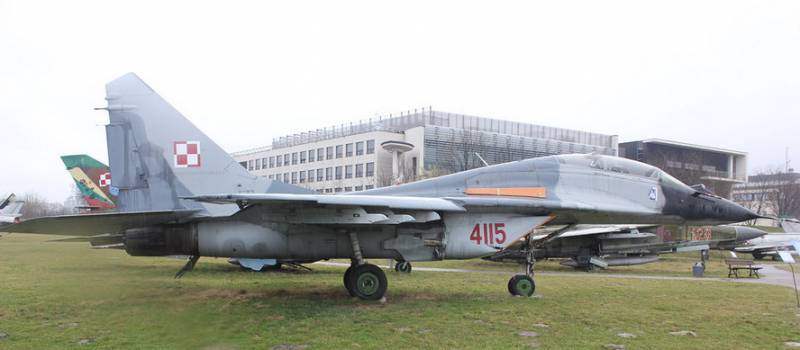
Information